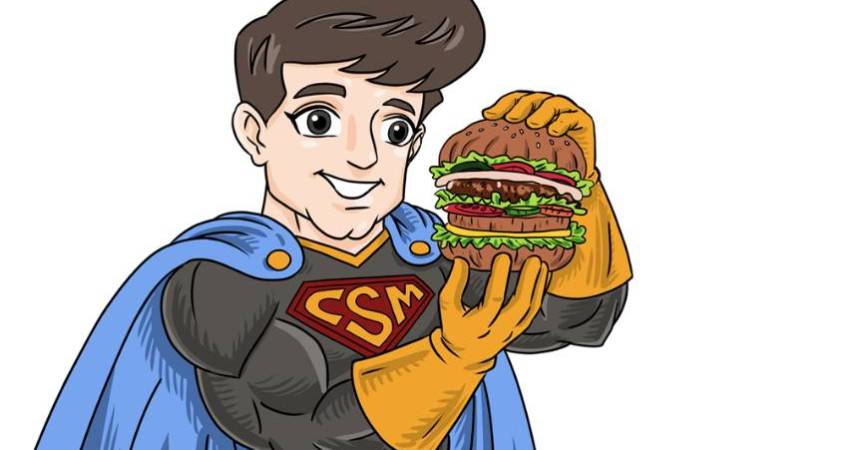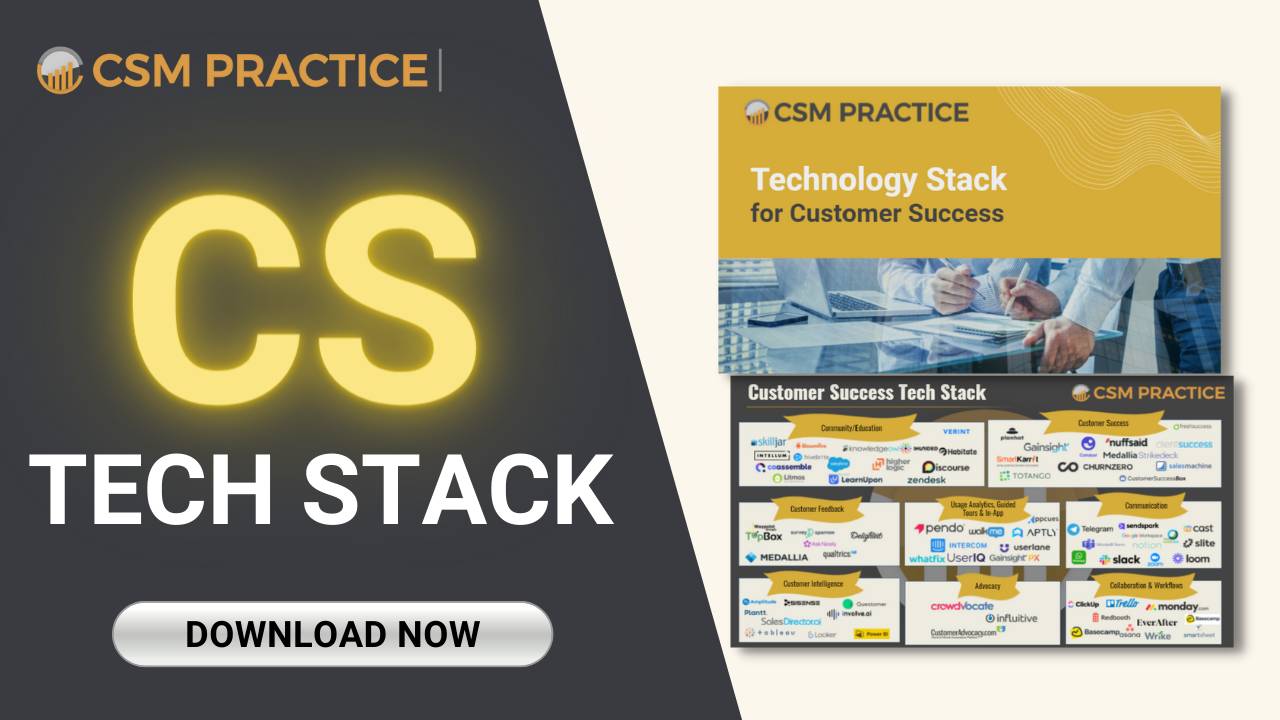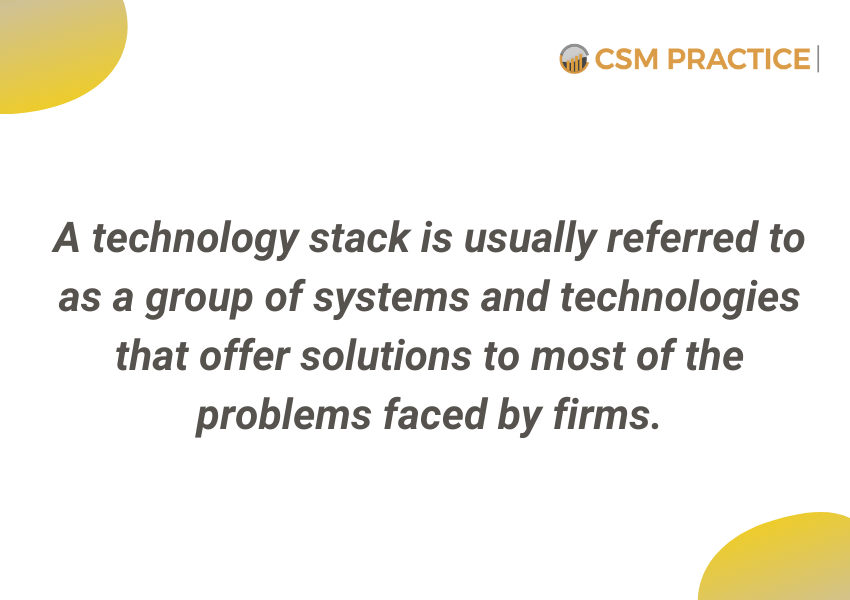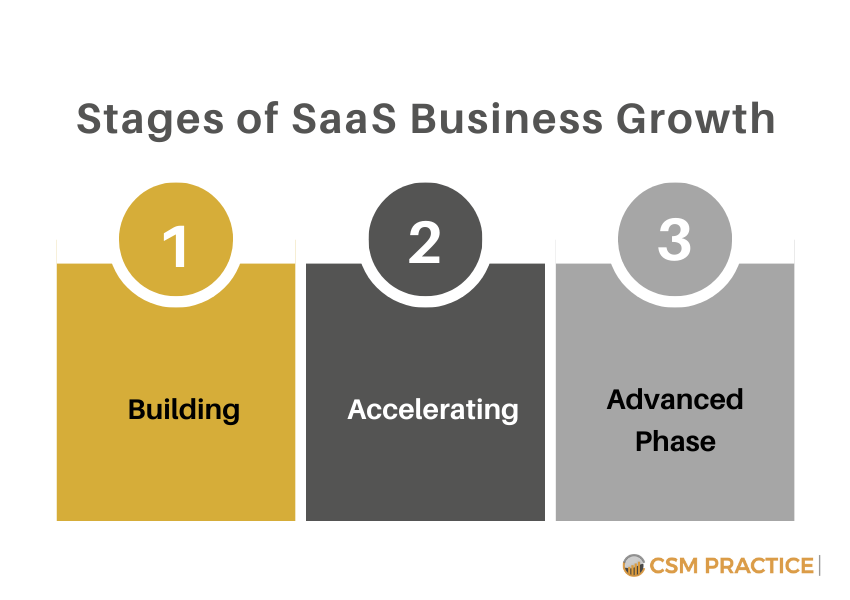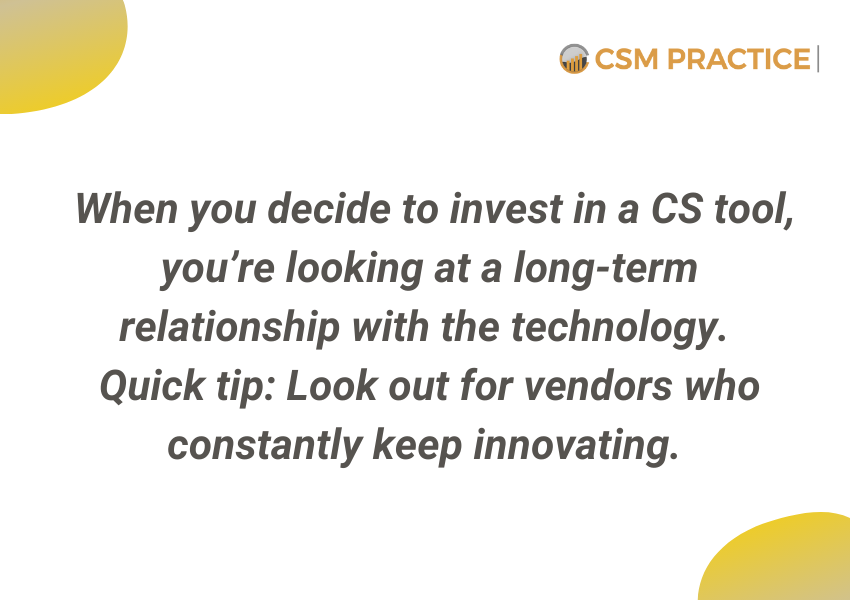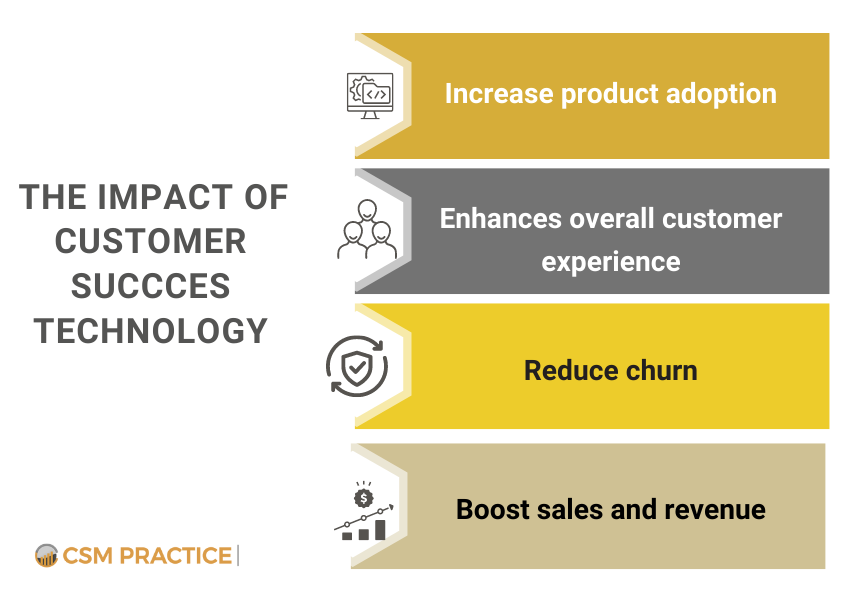“A team is only as strong as its weakest link”. This saying applies to your Customer Success Technology stack more than anything else. The tools in your stack must work together to provide an exceptional customer experience.
Well, it also means that technology itself doesn’t solve all problems. You need to lay out your journey first. What, why, and how are you going to solve the problem at hand needs to be explained. Customer Success is a rapidly evolving function. As an industry, it is fast-moving and outgrowing the tech!
Yet, Customer Success is often undervalued and underfunded. This has to be addressed. Revenue is there, where Customer Success is. So put up the tech stack where it matters. But expect to change it. Be clear on its scope and intention.
What is a CS tech stack?
A technology stack is usually referred to as a group of systems and technologies that offer solutions to most of the problems faced by firms. A Customer Success tech stack is a bundle of software solutions that address customer needs.
A CS tech stack that is not customer-centric loses usability gradually. A stack of well-integrated software is developed to guide customers to success. The most important part of the stack is a CS tool or software. While it was useful to have such a tool earlier, it has become a critical component of the stack now.
Best practices for building a CS tech stack
Answer the following questions, and you’d naturally find the best practice that suits your business.
What problem are you trying to solve?
Always start with the end in mind. That’s a cliche yet so true. Identify exactly what the issue at hand is. A tech stack should be a technological answer to a well-defined problem. Applying tech before a problem is understood, is a waste of time, energy, and money.
The nature of the problem varies with the nature of the business done.
Which stage of growth are you currently in?
A “good” CS tech stack looks different depending on the current stage of growth your business is in. Usually, the SaaS business growth is categorized into 3 phases:
- Building (spreadsheet) phase- This stage is characterized by a lower volume of customers. You’ll be able to provide a ‘High-touch’ engagement platform to customers. An advanced excel would do the job here. No need to have fancy software for a stack.
- Accelerating (growth) phase.- When your business grows and scales, you’ll need more than a spreadsheet. The limitations become crystal clear. You’re more focused on Onboarding, product adoption, etc.
- Advanced phase– At this stage, you’ve established yourself. You have a large number of customers. Managing their needs, dedicated CSMs, CRM platform, CS platform, Support tool, Billing platform, community, etc.
Depending on your position, build the stack. Every stage has its challenges. As your business scales, a Customer Success Technology Stack is the best way to keep the customer experience as seamless as possible.
Will the investment in CS technology make sense?
It makes sense if you’re scaling up and not at the ‘building’ phase. When you decide to invest in a CS tool, you’re looking at a long-term relationship with the technology. A quick tip here would be to look out for vendors who constantly keep innovating. A ‘purpose-built’ CS tool for successful teams is a good option.
Irrespective of your selection, the technology should help you measure the
metrics that matter the most like:
- Net Retention Rate
- Customer lifetime value (LTV)
- 360-degree Account health
- % reduction in churn rate
How does CS technology impact the entire organization?
It is interesting to see how CS impacts different departments of your organization. A CS tech, if chosen wisely, helps in-
- Increase product adoption
- Enhances overall customer experience
- Reducing churn
- Boost sales and revenue
As you can see, your Customer Success process gets streamlined. Most of the repetitive and tedious tasks are automated. They can now focus on what matters.
Your CS team becomes happier. This translates to increased productivity and enhanced customer engagement. Happy customers are the true brand ambassadors for your business. Customer Retention increases as churn reduce.
So you see the impact is immense. Right CS tech can be a game-changer for your business.
Who owns the CRM, marketing automation, etc?
Everyone who uses a CRM owns it. Sales, marketing, leadership, and support use the platform religiously. Marketing Automation is usually owned by the marketing department. It increases the ability to close new customers cost-effectively. Have clarity on the same before you start building a tech stack.
If CS leaders use the CRM platform, understand at what level of CS tech stack should it be placed. The CS tech stack starts with a CRM tool, then gradually progresses towards the Customer Success tool, and ends at the Learning/Education/Community tool. The usual tech stack comprises-
- CRM software/tech tool
- Customer Support tool
- Chat tool
- Subscription Management tool
- Collaboration and workflows tool
- Customer Success tech/software
- Communication tool
- Analytics and Notifications tool
- Customer Intelligence tool
- Onboarding
- Customer Feedback tech
- Referrals/ Advocacy tools
- Community/Education/Learning tech tool
Look at the entire journey.
Customer Journey is a crucial parameter to consider. A CS tech stack flourishes when it caters to different customers who are at different points in their respective journeys. It is required to look at the issue holistically. Entire customer experience, starting from day 1, determines whether the customer would want to stay with you or not. So get your tech stack to provide the ultimate customer experience.
Getting budget for the tech stack
Okay, so this is the most dreaded part for most of the Customer Success leaders. Getting the additional budget approved by the decision-makers is no mean task. If you think the same, go through the points as they will make life easier for you.
- Prove that the ARR/MRR grows with Customer Success. CS is tied to revenue retention. Net retention/gross retention rate is an important metric that you can show as proof.
- Product-led and human-led- CS. Your Customer Success is not only human-led. It is product-led also. It means that the product plays a critical role in customer experience. Allocating the additional budget for product feature improvements should not be compromised.
- Keep in mind CS objectives. The overall business objectives need to be pursued. However, don’t lose sight of Customer Success goals in between. To identify Retention, Renewals, and expansion opportunities, do what needs to be done. Keep track of customer journeys and maintain continuous interactions with them. This to happen needs Customer Success Managers and account managers in the team, which translates into an additional budget here as well. Open up the conversation with the CFO and explain.
- ROI Growth rate– CEO and CFO are thinking about EBITDA. Present quantitative data. Nothing else matters here. Your CEO/CFO thinks in numbers, so show numbers. Show how the investment in CS has catapulted your business growth, in numbers.
- Convince them to spend more on customer success technology. As mentioned earlier, it is critical in today’s day and age for a SaaS business. It’s essential to get a competitive advantage. This is a good starting point for having the budget conversation.
- A cross-functional mindset is necessary. Investment in CS will impact the entire organization. Other departments also will benefit. As a customer retains, revenue increases, the brand value increases thus fuelling upward growth. Ultimately the firm stands advantaged.
Data stack is also important.
Both tech stack and data stack are different things and deserve complete different conversations. Focusing on the tech stack should not mean losing focus on the data layer.
As a best practice, it is safe to not have an individual functionary as the Data layer owner. Sadly, the functionaries (operations) are in silos.
Entities should look at the entire customer experience holistically. There should be a ‘data warehouse strategy’. It focuses on a streamlined process for managing data from different sources to offer constructive business insights. Hene, a centralized data layer is necessary. People do have contrarian views whether if data going back and forth among departments is okay? Does it matter? The majority believe that it ought to be distributed. If gets passed around, what ends up having is different versions of the same data. Fresh data from different cloud-based platforms is good.
Some questions that can be asked are as follows:
- What sort of data does your tech stack provide?
- Is the data from the stack actionable enough? Does it need further analytics to conclude?
- Is your life made simple by your data?
Very simple yet powerful pointers to be carefully answered. Data is abundant. It’s easy to get overwhelmed. A “good CS tech stack” should be able to cut through the noise.
Final thoughts on the tech stack
There’s no point in building a tech stack that’s overly complex right from the start. Start simple and gradually scale up. Remember, start with why. Problem identification is the first and probably the most important step in building a Customer Success tech stack. A customer-first attitude is key to developing such a stack.
However, only developing won’t ensure long-term success. Get your tech stack in order and understand that customers are crucial to you. Be proactive with building one. Ensure that it meets the needs of your customers and is aligned with your business goals.

